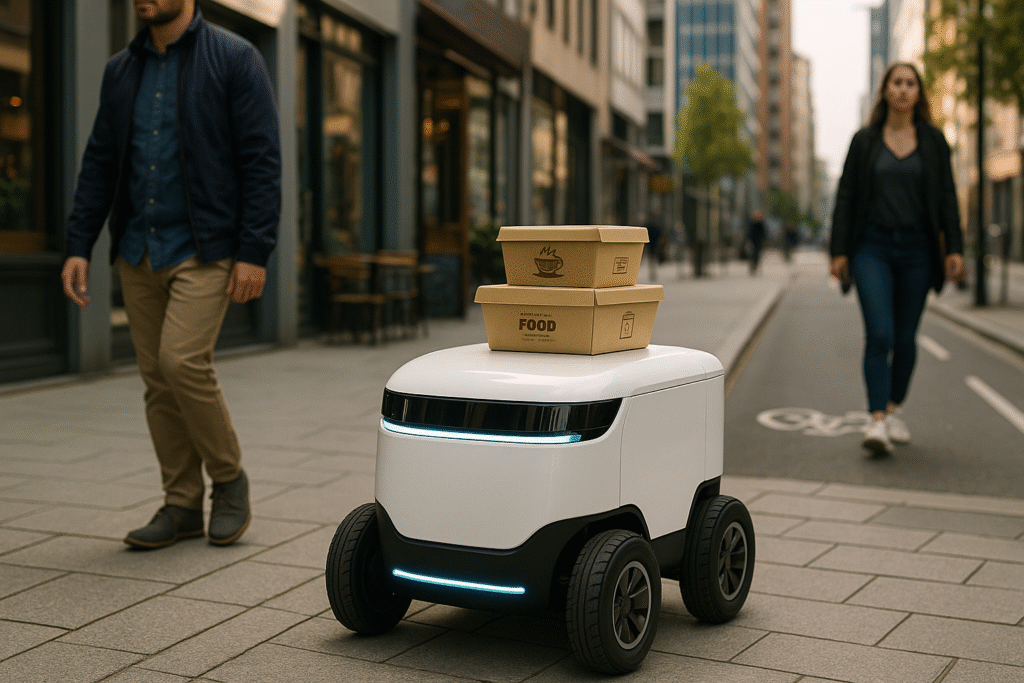Delivery as we know it is changing—again. Across major U.S. cities, autonomous delivery robots are now navigating sidewalks, crosswalks, and campus paths to deliver groceries, meals, and parcels. These low-profile, AI-powered bots are turning heads—and cutting costs—at a time when last-mile logistics is ripe for disruption.
Companies like Starship Technologies, Amazon, and Serve Robotics have deployed thousands of units in 2025, with major retailers and food chains already onboard.
How the Technology Works
The robots use a blend of GPS, LIDAR, computer vision, and 5G connectivity to plan routes, avoid obstacles, and interact with traffic. Each unit is outfitted with:
- 360° cameras for object detection and people recognition
- Autonomous braking and obstacle avoidance
- Remote human override in rare edge cases
- Secure, temperature-controlled cargo bays
“Think of it as a self-driving car in miniature, optimized for sidewalks instead of highways,” says Lex Bayer, CEO of Starship Technologies.
Why Businesses Are Embracing the Bots
The economics are hard to ignore. Delivery robots cost less than $1 per trip on average, compared to $4–$10 for human couriers. This margin is particularly attractive for:
- Quick-service restaurants
- Campus food courts
- Retailers in dense urban areas
- Grocery chains offering same-day delivery
Domino’s, Walmart, and Uber Eats have already announced pilot programs in cities like Austin, San Francisco, and Miami.
User Experience: Convenient or Creepy?
Consumers seem split. While most find the robots cute and novel, others worry about safety and job displacement. The bots communicate with audio cues and LED signals and even say “thank you” when customers open them via app codes.
Security is a concern too, but tamper alarms, GPS tracking, and real-time camera feeds have so far prevented serious theft or vandalism.
Conclusion
Autonomous delivery robots are no longer a futuristic concept—they’re here, and they’re scaling fast. With their efficiency, cost savings, and AI-driven adaptability, these sidewalk cyborgs may soon become as common as food trucks and mailboxes.
Sources: Starship Technologies, Serve Robotics




